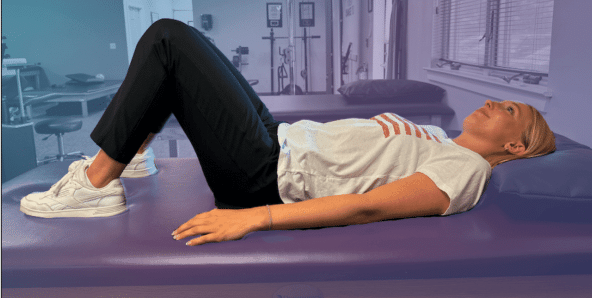
Hip pain is common among all age groups and activity levels. A recent study shows hip pain injuries represent
28% to 45% of injuries in women and 49% to 55% in men. In fact, hip pain can be a debilitating issue that affects your daily activities, from walking and sitting to enjoying your favorite sports and hobbies. Whether caused by injury, overuse, or conditions like arthritis, hip pain can limit your mobility and reduce your quality of life. However, physical therapy exercises can be an effective way to alleviate discomfort and improve hip function.
In this blog, we’ll explore a variety of targeted exercises designed to strengthen the muscles around
your hip, enhance flexibility, and promote healing. By incorporating these exercises into your routine, you can
take significant steps toward managing and overcoming hip pain.
Common Causes of Hip Pain
The location of the hip pain can help determine the exact cause of your discomfort. Pain in the groin area can often signify a core muscle injury or a pelvic floor issue. Core injuries are usually the result of overusing or straining the muscles or soft tissues in the hip, groin, or abdomen during rigorous physical activity. Injuries like this can cause pain in the hip when the root problem could be somewhere else. Another common hip condition that often develops with age is bursitis. Bursitis occurs when fluid-filled sacs surrounding and protecting your hip joint become irritated or inflamed. This condition results in pain that can be constant regardless of whether you move your hip or stay still. Highly active individuals are prone to hip injuries or conditions like
tendonitis or hip impingements. Tendonitis can occur when the tendons are strained or overused,
especially when individuals participate in activities that involve repetitive motions. Hip
impingements are also very common in highly active patients but typically develop at a younger
age when intense physical activities cause a patient’s hip bones to develop improperly. Not only
can this cause pain and loss of mobility, but it can also increase the risk of other hip conditions if left untreated.
Hip fractures are another common cause of severe hip pain and are often the result of a fall or a traumatic
impact injury. The risk for hip fractures increases with age as the bones become more brittle and weaker. If
left untreated, hip fractures can result in conditions like avascular necrosis, in which the blood supply to the hip bones decreases, resulting in bone tissue death. Discovering the cause of hip pain is the first step to
recovery and finding solutions that work for you.
Request an Appointment
If you’re experiencing persistent hip pain, don’t ignore it. We are dedicated to helping you regain mobility and live a healthier, more active life. Schedule an appointment today and take the first step towards.
How a PT Can Help
Physical therapists play a crucial role in managing hip pain and getting to the root cause of the pain. Here’s how
a PT can help:
- Personalized Exercise Programs: Physical therapists
can design tailored exercise regimens for hip mobility
and strengthening. - Assess: Physical therapists can assess all areas of your
hip and back and check for various limitations keeping
you from doing things you love! - Educate: Physical therapists can help educate you on
your injury and pain and come up with proactive ways
to avoid re-injury











